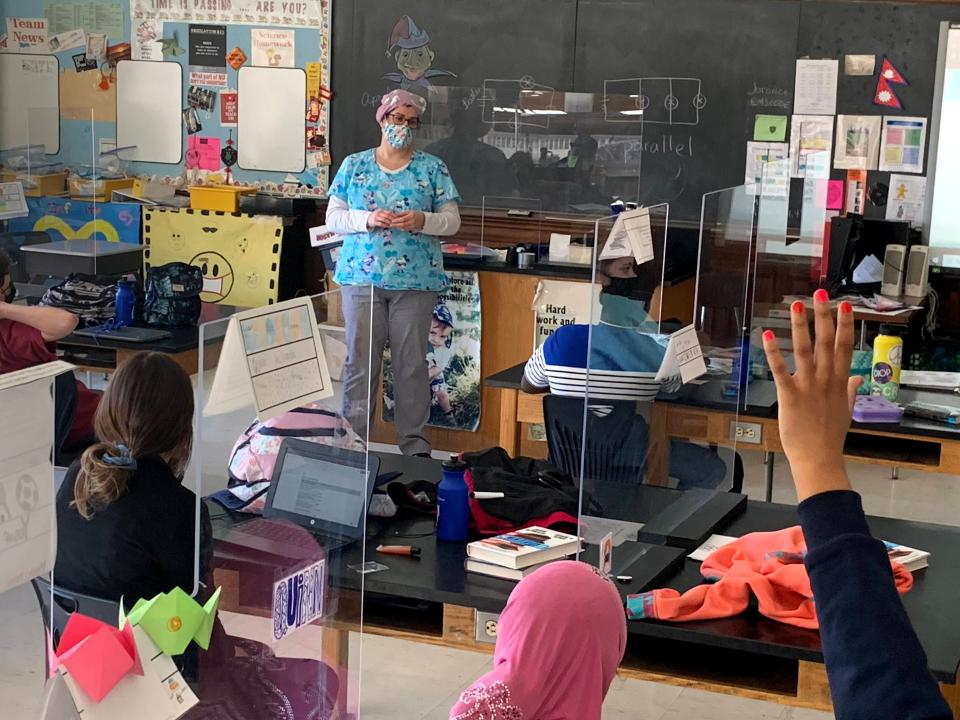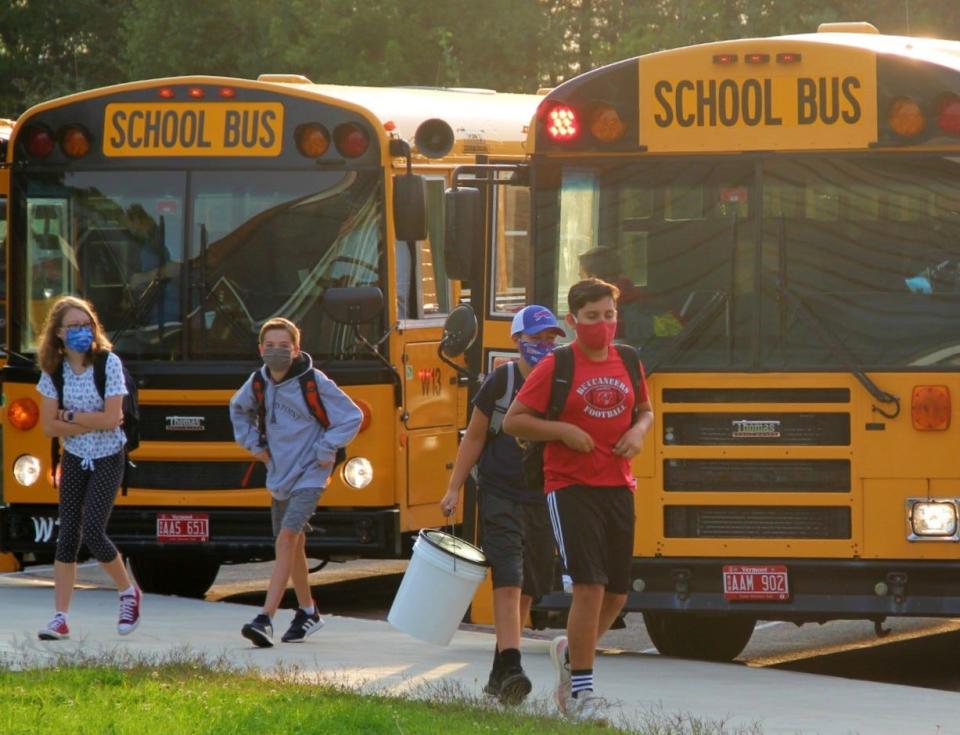How COVID-19 rules are different at Vermont schools and child care centers this year
Policies to prevent the spread of COVID-19 have dropped off considerably for Vermont schools and child care centers for the coming school year.
This school year, expect to no longer see "test-to-stay," masks or requiring infected kids to test negative before returning to the classroom.
The state has shifted toward a strategy of treating the virus like other common communicable diseases, with some minor additions.
“As we begin to think of COVID-19 as an endemic disease, we once again need to shift our thinking," said Vermont Health Commissioner Mark Levine. "COVID-19, like the flu, is now a part of our lives.”
The Vermont Agency of Education, the Department of Children and Families and the CDC all released guidance within a few days of one other.
Here's what you need to know.
Summer of changeVermont stops free COVID testing on June 25. Here's what you need to know.

School nurses are in charge of what to do with a sick child
Ultimately, school nurses or an early childhood educator (in a child care setting) will have the authority to determine how to address a child exhibiting symptoms of illness.
Using their clinical judgment, a nurse could choose to send a child back to the classroom if their symptoms are minor, test them with a rapid test in the nurse's office to determine whether they remain at school or not, or send them home.
It is recommended that students and staff be sent home if they test positive for COVID-19 with a rapid test or if they are not well enough to participate in school activities, regardless of the test result.
Tracking the cases:Vermont drops the daily COVID-19 dashboard: Check these alternatives.
Testing can be used, but isn't required
The state has distributed rapid antigen tests and LAMP tests to all Vermont schools to use as they please, with the ability to order more, if needed.
These tests are only to be used for symptomatic persons and can be performed at school or sent home with students. But, testing is not required, even for those who are symptomatic.
Families will need to provide consent for COVID-19 testing in a school, child care or preschool environment. Children under two are not recommended to have a rapid test, so if it is determined they need one, they should get a PCR test from a licensed healthcare provider.

Isolation still recommended for students with COVID
Under state guidance, schools and child care facilities will maintain an isolation area for sick students or staff. Here, symptomatic children may be asked to wear a mask, if over the age of two, while awaiting COVID-19 test results or parents to come pick them up.
Those who test positive for COVID-19 should isolate at home for at least five days from the start of symptoms or a positive test, whichever is earlier, according to health department guidelines. The person may return following the five-day isolation period if their symptoms have improved and they have gone at least 24 hours without a fever not controlled by medication.
Back to the classroom:You'll probably pay more for school supplies — how to find deals and what you need
Which policies are not returning?
Policies around COVID-19 in schools and child care centers have constantly changed as more is learned about the disease and transmission rates have fluctuated within the community.
Here are some policies that are no longer recommended.
Masking is now a personal choice and not a requirement. Social distancing — staying 6 feet or 3 feet away from the nearest person — is now no longer advised. The CDC has moved away from "test-to-stay" and quarantining strategies when someone is exposed to a person with COVID-19. Also, a negative COVID-19 test is not required to return to school or a child care environment.
Parents are still asked to monitor children for the following symptoms and consider not sending them into school or their early childhood education center if COVID-19 is suspected:
Fever (100.4 °F or higher)
Cough
Shortness of breath or difficulty breathing
Chills
Fatigue
Muscle or body aches
Headache
Sore throat
New loss of taste or smell
Congestion or runny nose
Nausea or vomiting
Diarrhea
Contact reporter April Barton at abarton@freepressmedia.com or 802-660-1854. Follow her on Twitter @aprildbarton.
This article originally appeared on Burlington Free Press: What to know about COVID policies in school and child care this year

